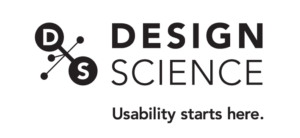Healthcare Providers: We want your input!
At Design Science our mission is to amplify the needs of users to cultivate advancement in health care technology. That’s why we need your input! Read more
At Design Science our mission is to amplify the needs of users to cultivate advancement in health care technology. That’s why we need your input! Read more
Recently, we conducted a technical evaluation for ADAPT Pharma, Inc. In the evaluation we compared two delivery methods for the opioid overdose reversal drug naloxone—NARCAN® Nasal Spray and a naloxone prefilled syringe with a nasal atomizer (PFS-NA). Read more
We put our heads together last week in a workshop aimed at expanding the role of Design Thinking in our organization’s culture. Read more
On November 8, we celebrated World Usability Day by engaging with some excellent design professionals and talking about the apparent discord between user-driven product development and financial influences in the medical world. Read more
The first week of October, the Human Factors and Ergonomics Society (HFES) International Annual Meeting came to our hometown of Philadelphia! This conference included presentations and events from a variety of human factors domains, such as surface transportation, aviation, and, of course, healthcare. Read more
To celebrate World Usability Day this year, Design Science sent Larry and Ziggy out to explore the impact of design on people’s day-to-day lives. It turned out to be pretty significant. Read more
As a company that is perpetually seeking to make products highly usable, it’s natural that we would apply that same scrutiny to how our own human factors usability studies are conducted. For the past few years, we’ve been exploring one specifically onerous aspect of usability studies: the ubiquitous pen and paper interview guide. Read more
What makes a use risk assessment good? Researcher Bryon Calawa answers that question in Design Science’s latest guest column for MedDeviceOnline. Read more
Verification and validation are two critical elements of product development. One informs the elements of a product’s design, while the other looks at those design elements in the hands of users. Although often used synonymously, these alliterative terms sit on opposite sides of the product development life cycle. Read more
The study of human anatomy using cadavers dates back to roughly 300 BC, when the Greek physician Herophilus started to use dissection to understand human anatomy. Since then, cadavers have served as a major aid to education and research. For medical students learning anatomy and surgeons perfecting their instrument techniques, cadavers provide physical training materials. What’s more, human cadaver tissue can be used to gain important information about product development and use on human tissue before the device is used in clinical settings. Read more
123 S. Broad Street, Suite 1350
Philadelphia, PA 19109
T 215.627.4122
F 215.627.4335
909 Davis Street, Suite 470
Evanston, IL 60201
T 312.584.0240
F 215.627.4335
Blütenstraße 15
80799 München
Germany
T +49.(0)178.876.7277
We conduct rigorous research to optimize the usability, safety, and customer appeal of products. Contact us to discuss a project today.
